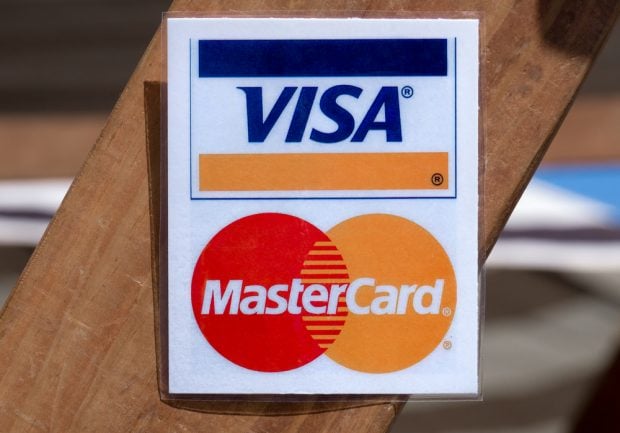In a move which some have seen looming for years, CO-OPFinancial Services and Financial Services Centers Corp. have signeda letter of intent to merge their shared branching operations.
|According to the firms, that combined network will involve 1,700credit unions with more than 4,300 branch locations and 2,200kiosks located in 7-Eleven stores.
|The agreement provides for FSCC CEO Sarah Canepa Bang to becomechief operating officer at FSCC and chief strategy officer at CO-OPShared Branching, a division of CO-OP Financial Services.
|“I am excited for the credit union movement as this combinationwill advance the vision of FSCC to have every branch of everycredit union an outlet,” said Canepa Bang. “There's no denying that FSCC and CO-OP have beenterrific competitors–imagine what we can do together. CO-OP andStan Hollen personally played an historic role in the creation ofFSCC, and now with the combining of the two companies, it is verymuch a case of our business coming to a logical full circle.”
|“The combination of CO-OP and FSCC will blend the strengths andvalue of both companies, creating a more tightly integrated andefficient shared branching network for our movement,” said StanHollen, CEO of CO-OP Financial Services. “With more than 4,300branch locations, credit unions have at their disposal the fourthlargest network in the country, behind the three largest nationalbanks. This truly enables credit unions to compete and win againstbanks in terms of the access and convenience they can offer theirmembers.”
|“We are looking forward to Sarah Canepa Bang and her teamjoining CO-OP and to the critical role she will play in workingwith all shared branching leadership to develop and move a unifiedstrategy into the future,” said Hollen.
|The move requires an approval vote by FSCC's 125 shareholdingcredit unions but no similar vote on the CO-OP side. Bang said theenthusiasm the network experienced after it told the credit unionsled her to believe there would be a positive vote.
|Jointly interviewed by Credit Union Times, both Canepa Bang andHollen emphasized the different ways this move will, they believe,better serve credit unions, both those that already participate inshared branching and those that do not.
|One particular goal is to at least double the number of creditunions participating in shared branching.
|“I will be ashamed if we don't at least double the numbers ofCUs in shared branching,” Canepa Bang said. “We have spent yearsbeating down the obstacles and objections, reducing the costs ofgetting involved, showing that shared branching does not lead youto lose members–it retains them.”
|Both executives attributed the delay in recruiting credit unionsto shared branching, in part, to the energy, attention andresources each organization has often plowed into competing withthe other.
|“Stan and I have always been fierce competitors,” Canepa Bang said. “But I think it's important to say that Stan hasalways kept the focus on where it should be, on the big banks andhow shared branching helps them compete with the big banks.”
|Canepa Bang also said it would not be too much to expect anationwide advertising campaign in the future about sharedbranching or touting shared branching as a credit unionattribute.
|Hollen agreed and noted that with more than 19,000 credit unionbranches in the country, shared branching has plenty of room tocontinue to grow and expand.
|The merger was also helped because, even though they competed,shared branching organizations have always kept close technicallinks and allowed members of credit unions in the otherorganizations to conduct transactions in their branches.
|This effectively meant that members of shared branching creditunions had shared branching outlets available across the U.S., andHollen said the new organization would build on that history to getto where it could rival Bank of America for the most bank branchesin the U.S.
|Bank of America currently claims to have 5,700 branches.
|Hollen and Canepa Bang said that for the foreseeablefuture credit unions in each network will continue to use the sameshared branching platforms they do now. These are similar in manyway, but not the same, and changing would generate unneededexpenses, they said. They also explained that the merger wouldallow the new organization to approach certain vendors, like FISand 7-Eleven, that they already have in common with increased cloutfrom greater volume.
|The merger is the last in what has been 10 years of sharedbranching consolidation. Ten years ago, there were three sharedbranching organizations and CO-OP Financial Services (then known asCO-OP Network) had not direct role in any of them, though it hadhelped to manage FSCC soon after the network was launched.
|The oldest of the three was the Service Centers Corp., theoriginal shared branch network that was headquartered in theMidwest and emphasized building shared branching centersthat were standalone centers that more than one credit union woulduse. CO-OP Financial Services bought SCC and entered into sharedbranching directly in 2002.
|The second of the three was the Credit Union Service Corps. Itwas headquartered on the East Coast and deployed a strategy throughwhich credit unions would affiliate with it most often throughrelationships with shared branching organizations run by theirleagues. In 2007, CO-OP Financial Services and CUSC merged operations with CUSCbecoming CO-OP Shared Branching.
|The youngest of the three was FSCC, headquartered on the WestCoast, with a strategy that emphasized using credit union branchesas outlets to build the network.
Complete your profile to continue reading and get FREE access to CUTimes.com, part of your ALM digital membership.
Your access to unlimited CUTimes.com content isn’t changing.
Once you are an ALM digital member, you’ll receive:
- Critical CUTimes.com information including comprehensive product and service provider listings via the Marketplace Directory, CU Careers, resources from industry leaders, webcasts, and breaking news, analysis and more with our informative Newsletters.
- Exclusive discounts on ALM and CU Times events.
- Access to other award-winning ALM websites including Law.com and GlobeSt.com.
Already have an account? Sign In
© 2024 ALM Global, LLC, All Rights Reserved. Request academic re-use from www.copyright.com. All other uses, submit a request to [email protected]. For more information visit Asset & Logo Licensing.









